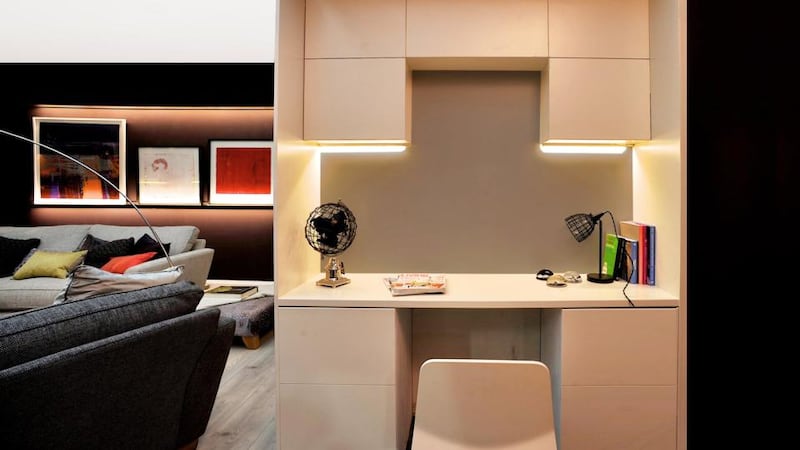Lighting is one of the most important design aspects of a home and it’s something many people struggle with. It has such a powerful effect on the ambiance of a room that it is worth taking the time to get it absolutely right. And it’s particularly important this time of year when the days are rapidly getting shorter, meaning we will start to become more reliant on artificial lighting.
The trick is to get the balance of artificial and natural light right. Too much artificial light will result in a space that feels clinical. But if it is under-lit everything will appear gloomy and uninviting.
There are four main ways to light your home – ambient, task, accent and decorative – and each one provides a completely different lighting effect. To decide which option is right for you, you will first need to decide what the area is going to be used for, then select the best option to achieve the optimum lighting for that room’s function.

Ambient lighting is a purely functional form of lighting that provides an overall illumination for a space and is generally achieved either by overhead pendants or spotlights.
When planning your lighting scheme a good rule of thumb is not to rely solely on this kind of lighting. Secondary lighting such as floor and table lamps will not only help to dress a room but will also create atmosphere.
If ambient lighting is your only lighting source you will find that you have dark spots in your room. It’s also important to avoid the temptation to overlight a room with too many fixed downlights – the result will be harsh and will tend to create glare. Instead, position directional fittings so they light the walls to reflect light back into the room. These type of fittings can also be used to provide accent lighting, which highlights architectural features or pictures in the room.
Task or directional lighting provides a focused source of illumination in an area where a task needs to be carried out. For example, in a home office or study space for working at a desk, above the kitchen worktop, or in the bathroom around a mirror.
And finally there is decorative lighting which not only illuminates the space but is also a feature in its own right. A good example is a pendant light over a dining table or in a hallway. The positioning of a decorative light is very important, so think carefully about where you will locate your fixture. Remember it’s going to be a standout piece.
Dimmers
Wherever possible, replace standard switches with dimmers. This will allow you to control the light quality in the room, be it low light, ambient light to relax and entertain, or brighter light to read and work.
Your choice of bulb is very important too as the colour of the lighting in your home can completely affect the look and feeling of your décor – so choosing the right bulbs is of the utmost importance.
A standard incandescent bulb will give a warm yellow light, perfect for a cozy livingroom or bedroom. A CFL (compact fluorescent light) or Led will typically give off a whiter light – better for bathrooms and kitchens.
However, there are new varieties of Led bulbs on the market which replicate the warmer light and some colour changing versions also. My favourite are the Philips Led light bulbs, which provide a beautiful, warm white light, give an exceptionally long life and immediate energy savings. Not only will your rooms look great but you’ll be saving money too.
Denise O’Connor is an architect and design consultant












